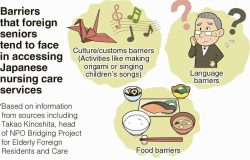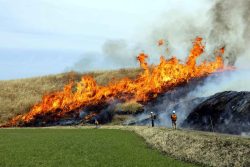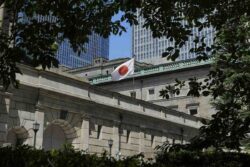LEGEND / Isao Aoki Always at the Forefront of Japanese Golf; First Male Japanese Player to Win on PGA Tour
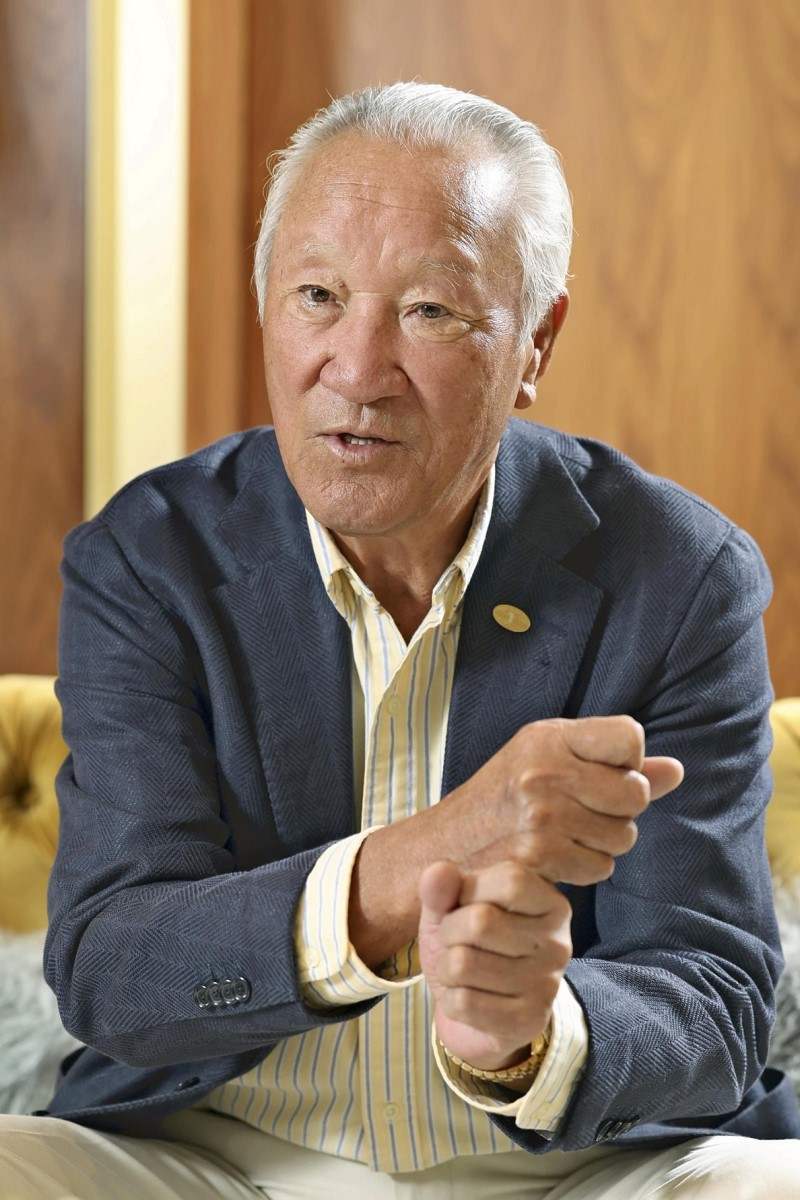
Isao Aoki, a legendary golf player who competed on the world stage and led the Japanese men’s golf world, responds to questions in Tokyo in October 2023.
10:58 JST, January 15, 2024
With an illustrious career spanning 56 Japan Golf Tour titles, one European Tour title, one Australian Tour title, and becoming the first male Japanese golfer to win on the PGA Tour by winning the Hawaiian Open in 1983, Isao Aoki, 81, is a pro golfer of global fame. A master at putting and subtle tricks near the greens, he has always been at the forefront of Japanese men’s golf.
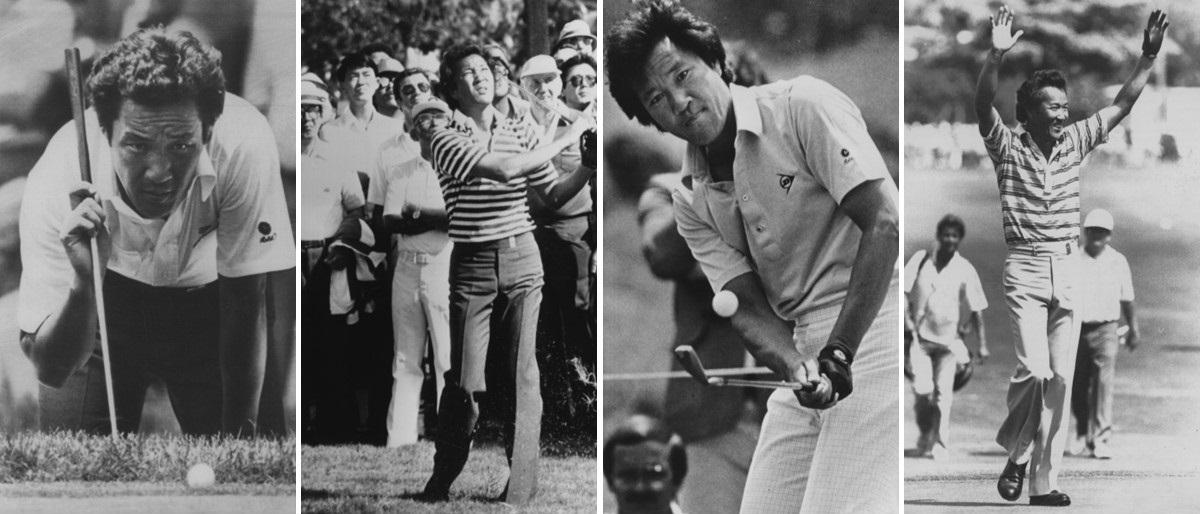
From left:
Aoki reads the green from the bunker on the 17th hole on the second day of the U.S. Open held in New Jersey in 1980.
Aoki hits a wedge shot on the final hole on the 2nd day of the Hawaiian Open in 1983.
Aoki hits a shot on the 3rd hole on the third day of the Tournament of Champions, in California in 1983.
Aoki responds to calls from the gallery after he holes out a wedge shot for an eagle on the final hole to clinch his come-from-behind win on the final day of the Hawaiian Open in 1983.
Young and eager to practice
The sound of “click, click” was heard from a practice green lit only by lamps at Abiko Golf Club in Abiko, Chiba Prefecture. A staff member on night duty called out, “Aoki, go home. I can’t go to bed while you’re here.”
Aoki would rush back to his home, 15 minutes from the golf range, and pour warmed miso soup over rice to eat in a hurry. In the morning, he would wake up at 4:30 a.m. and start practicing, even before sunrise, on as many holes as possible.
After graduating from junior high school, he aimed to become a professional golfer while working as a caddie. He lived on five hours of sleep for six years until he passed the pro test at the age of 21.
Aoki put up with such hardships because he was encouraged by the victory of Yoshiro Hayashi in a golf tournament with a ¥300,000 prize. Both Hayashi and Aoki came from Abiko.
Comparing the smallish Hayashi, 160 centimeters tall, with himself, 180 centimeters tall, Aoki thought, “If this little old guy can win a ¥300,000 prize, I could make ¥500,000 or ¥1 million.”
He was a boy who lived for baseball until junior high school. “I hate to lose and I’m self-centered, so golf was better suited to me than a team sport,” Aoki recalled.
Late boomer
It was at the age of 28 that he won his first victory as a pro. During his 20s, he won only two titles. Compared to many of today’s male pro golfers, who have been doing great things since their early 20s, Aoki was a fairly late bloomer.
His style of swing was a hook shot that would curve to the left in flight. At crucial moments in the game, his hook shots would curve from one side to the other too much, driving him into a fix and make it hard to win titles.
Before the 1973 season, he underwent a 40-day training camp at Kanozan Golf Club in Chiba Prefecture, during which he mastered a fade shot that would travel slightly left-to-right, and he began to win.
He won six times in Japan that year. And in 1976, he became the leading money winner on the domestic tour. He began to win multiple tournaments each year and took part in competitions overseas.
“I played in 42 to 43 tournaments a year on the Japanese, U.S., European, and Australian tours. And I did it for five years. There was a time difference, but I didn’t think it was hard. I just wanted to play golf,” Aoki recalled.
At the Hawaiian Open in 1983, his many years of effort bore fruit. On the par-5 18th hole, on the final day, he hit his third shot with a pitching wedge from the rough 128 yards from the pin, and the ball took one bounce and dropped into the hole.
With the eagle, he won the title by one stroke and became the first Japanese player to win on the PGA Tour.
“I was told that the shot I made would go in once in 300,000 shots. I was a poor player, and I had created thousands of situations where I had to use a pitching wedge, but one of those shots happened to go in. I also got the extraordinary strength resulting from the adrenaline rush that would occur during an emergency,” he recalled. The next year, he hit a shot from the same spot but could only reach the green with an 8-iron, he said.
Never stop learning
The strengths Aoki would utilize when competing with the world’s leading players were his putting and subtle tricks to be used near the greens, which he had honed since he was a teenager.
“My sand wedge would become useless, with the grooves worn away in a year. I always counted backward from the cup to the teeing ground,” he said.
In recent years, the performance of golf clubs has improved, with the flight distance of the driver increasing tremendously. But the average scores of golf players today have not changed much from the time when Aoki was making a spectacular showing on major tours.
“It is because they are bad at putting. They would hit their approach shot as if getting the ball as close to the hole as possible was the goal, rather than trying to put the ball into the cup,” said Aoki, taking a stern view toward his juniors.
Even though he is now over 80 years old, he still trains his body every day and thinks about golf. He said, “I think it’s my calling. I don’t think I will ever feel satisfied. So when I die is when my golfing style will be complete.”
Fixing his hook
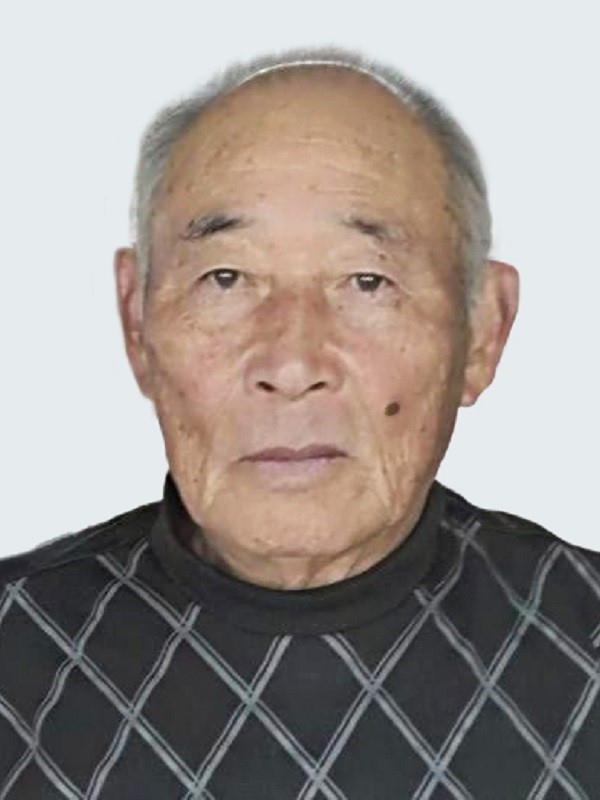
“The balls he used to hit were amazing,” recalled Namio Takasu, 80, who coached Aoki at the Kanozan training camp back in 1973.
“The moment Aoki hit the ball, the gallery on the right side of the course would try to get out of the way, but when it was coming down to the ground, the gallery on the left side would do likewise. His balls would curve so much in flight. From the start, he was good at putting, so I guess he wanted to fix his drives somehow,” Takasu said.
Takasu and Aoki were in the same year at the same junior high school. One day, Aoki went up to Takasu, and asked him, “Hey, I want to fix my hook ball. Give me a lesson, will you?”
Aoki, who was a pitcher on the baseball team in junior high school, has a strong right wrist. At the very moment he hit the ball, he would somehow change his grip. So, they bound his wrists with adhesive tape as he held his club, thus fixing his grip.
He then practiced hitting the balls for more than three hours straight, and around six to seven hours a day in total. When Aoki said, “I’m hungry,” Takasu would put an onigiri rice ball into his mouth.
“As we were both pros, he worked hard and I worked with him to the bitter end,” Takasu said. The following year, Takasu was surprised to watch the trajectory of the balls Aoki hit during the training camp they had at Kanozan Golf Club. “The balls flew a longer distance and they didn’t curve in flight. Once I realized that I would no longer be able to beat Aoki, I knew I had made a mistake,” Takasu said.
Aoki still calls Takasu “sensei” out of gratitude.
***
The Legend feature profiles era-defining figures in culture, sports and other fields.
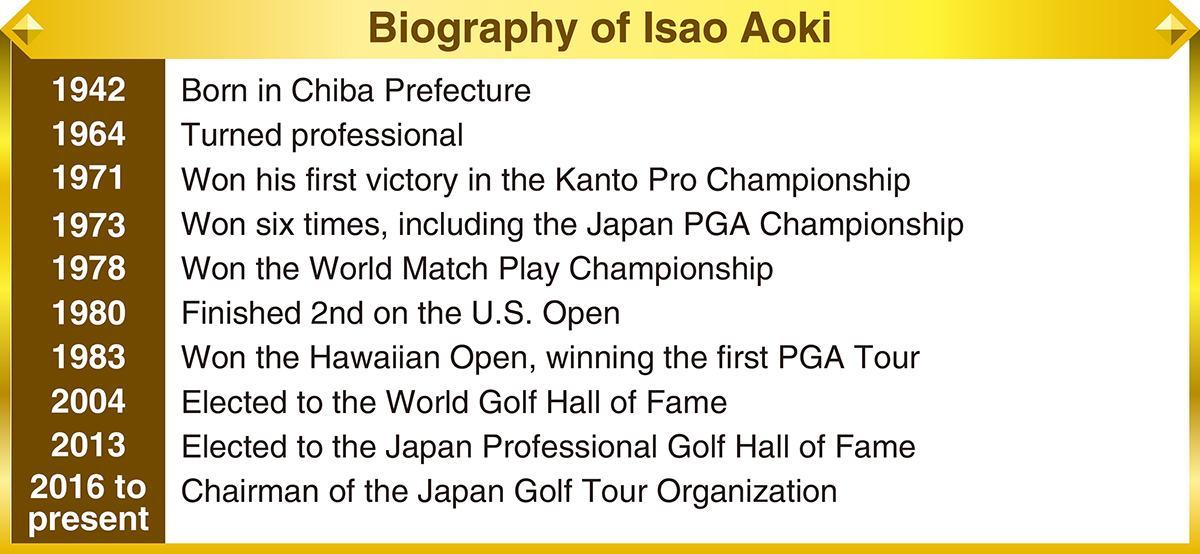
"JN Specialities" POPULAR ARTICLE
-

The Japan News / Weekly Edition (12/12-12/18)
-

English-language Kabuki, Kyogen Entertain Audiences in Tokyo; Portland State University Professor Emeritus, Graduates Perform
-

Noodle Dining Shunsai / Rich Oyster Ramen to Savor at Odasaga; Experienced 68-year-old Owner Creates Numerous Ramen Varieties
-

The Japan News / Weekly Edition (12/5-12/11)
-

People Keep Loved Ones’ Ashes Close in Special Jewelry, Small Urns as Unique Way to Memorialize Them
JN ACCESS RANKING
-

Keidanren Chairman Yoshinobu Tsutsui Visits Kashiwazaki-Kariwa Nuclear Power Plant; Inspects New Emergency Safety System
-

Imports of Rare Earths from China Facing Delays, May Be Caused by Deterioration of Japan-China Relations
-

University of Tokyo Professor Discusses Japanese Economic Security in Interview Ahead of Forum
-

Japan Pulls out of Vietnam Nuclear Project, Complicating Hanoi’s Power Plans
-

Govt Aims to Expand NISA Program Lineup, Abolish Age Restriction


